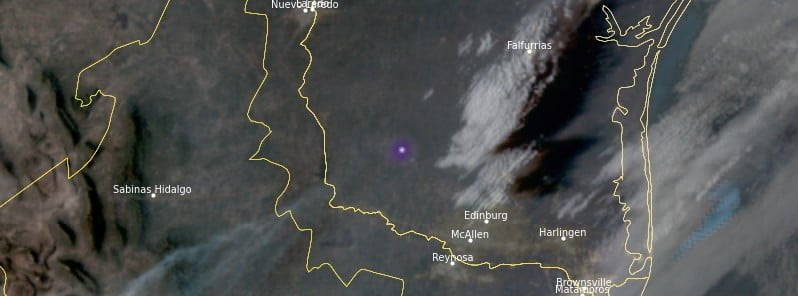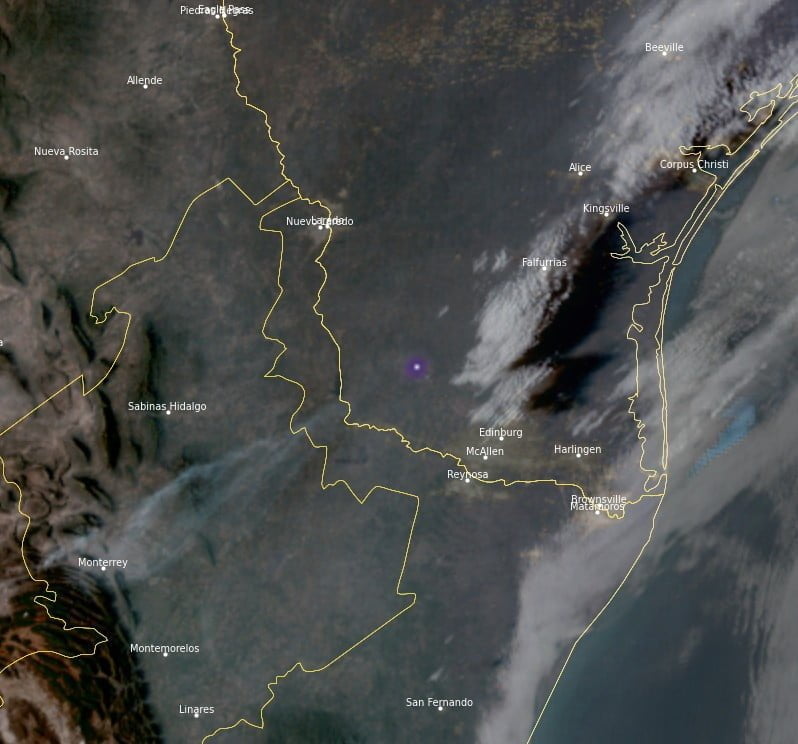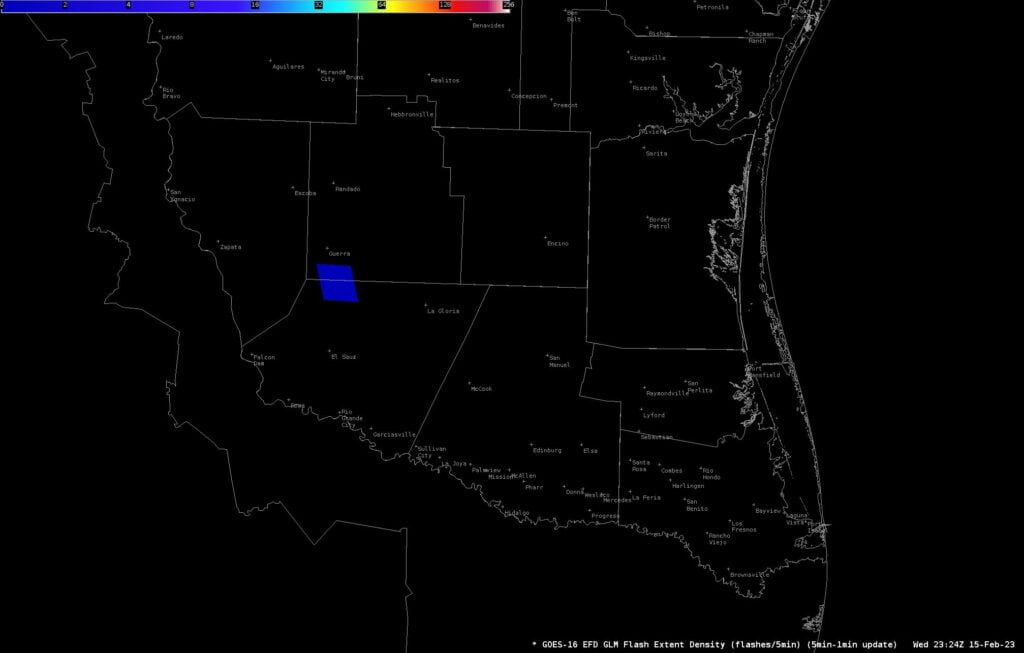Suspected meteorite impact investigated in Texas

Authorities are investigating a possible meteorite impact in the city of Mission, south Texas, after numerous residents in the area reported an explosion that shook their homes on February 15, 2023. Our analysis points to a meteoroid exploding over the region, with some pieces likely surviving the atmospheric entry.
Cesar Torres, chief of police in Mission, Texas, said officials were inundated with calls describing a large explosion and homes shaking at about 23:30 UTC (17:30 CST) on Wednesday, February 15.
The event created panic throughout the city, Torres said, adding that other area law enforcement agencies received similar calls but no damages or injuries have been reported.
According to Hidalgo County Sheriff Eddie Guerra, Houston Air Traffic Control received reports from two aircraft that spotted a meteor west of McAllen, located approximately 3.7 kilometers (6 miles) from Mission.
In addition, Geostationary Lightning Mappers aboard GOES-16 detected a flash with no storms at 23:24 UTC (17:24 CST), confirming this was most likely a meteor entering our atmosphere and exploding over the region.
It’s possible there are pieces of the object scattered in the region.


It is worth noting that actual meteorite impacts are relatively rare events, but they do happen. In fact, the Earth is bombarded by tons of meteorites every day but most of them are too small to survive the trip through our atmosphere and they burn up before reaching the ground.
While larger meteorites can cause damage upon impact, they are much less common. However, we’ve seen and documented several such events over the past couple of years. One of the recent ones smashed through a roof of a house in British Columbia, Canada on October 3, 2021.
You can read more about it in the article below:
Meteorites that could cause widespread damage, such as the 1908 Tunguska event in Siberia, are estimated to strike the Earth once every few hundred years. Smaller impacts that could cause local damage may occur more frequently, perhaps every few decades or so.
It’s also worth noting that the vast majority of meteorites that do make it to the ground land in uninhabited areas like deserts and oceans, so the chances of a meteorite impacting a populated area are relatively small.
Meteors are actually small rocky or metallic objects called meteoroids that enter the Earth’s atmosphere at high speeds. When a meteoroid encounters the Earth’s atmosphere, it is subjected to extreme frictional heating, which can cause it to burn up or “ablate” in a process called ablation.
The ablation process can create a bright and glowing trail of gas and debris behind the meteoroid, which is what we see as a shooting star, often described as a fireball when the object is larger. As the meteoroid descends deeper into the atmosphere, it may encounter denser air and heat up even more, causing it to break apart or “fragment” in an explosive fashion.
When a meteoroid fragments in this way, it can create a sonic boom – a loud, explosive sound caused by shock waves produced by the meteoroid’s high-speed entry into the atmosphere. The sonic boom is created as the meteoroid heats up the air around it, causing a rapid expansion of air that produces a loud, booming sound wave that can shake homes and break windows.
The best example of this is the Chelyabinsk event on February 15, 2013. Interestingly, it happened exactly 10 years before the south Texas event.
You can read more about it in the article below:
The Chelyabinsk event is the biggest asteroid airburst this century so far and the biggest one since the 1908 Tunguska event. This is also the only asteroid confirmed to have resulted in a large number of injuries.
The asteroid exploded some 29.7 km (18.5 miles) above the Russian city of Chelyabinsk at 09:20 YEKT (03:20 UTC) on February 15, 2013, damaging over 3 000 buildings and injuring over 1 500 people (mostly by broken window glass).
Although it was just about 20 m (65 feet), its light was brighter than the Sun and visible up to 100 km (62 miles) away.
Chelyabinsk asteroid, officially named Chelyabinsk meteorite, was undetected before its atmospheric entry, in part because its radiant was close to the Sun.
You can view the meteor’s entry and explosion in the video below. However, be sure to adjust the volume on your speakers as the sound is very loud.
Update
Based on analysis of preliminary information from several sources, NASA experts believe the object was a meteoroid about 0.6 m (2 feet) in diameter weighing about 453 kg (1 000 pounds).
The angle and speed of entry, along with signatures in weather radar imagery, are consistent with other naturally occurring meteorite falls. Radar and other data indicate that meteorites did reach the ground from this event.
Meteor speed was about 43 400 km/h (27 000 mph) and it had an energy of 8 tons of TNT. It broke into fragments at an altitude of about 34 km (21 miles).
References:
1 Texas: Meteorite rocks area near Mexico border, no injuries reported – USA Today – February 16, 2023
2 Possible meteorite over South Texas reported by local sheriff – My San Antonio – February 15, 2023
Featured image credit: NOAA/GOES-East, RAMMB/CIRA, The Watchers. Acquired at 23:24 UTC on February 15, 2023


The 1908 Tungusta event still remains unexplained, although metorite bolides have been excluded due to absence of any impactor debris.
It is commonly presumed to have been a smaller comet like object with an airburst explosion, as gaseous/ volatile comets wouldd leave very little (if any) ground evidence.
Interestingly, the central blast zone still does not have any tree regrowth, which after 115 years is a very strange phenomenon.